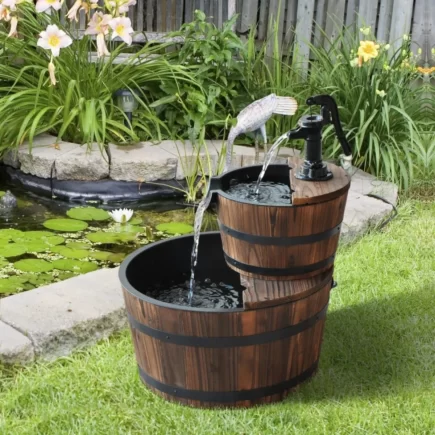Installing weed barrier fabric is a straightforward and highly effective solution for controlling weeds in your garden or yard. When done correctly, it can save hours of tedious weeding, improve soil moisture retention, and enhance the aesthetic appeal of your outdoor space. This guide will walk you through each step of the installation process, helping you achieve a seamless, professional result.

Whether you’re creating a flower bed, mulching a pathway, or planning a vegetable garden, learning how to install weed barrier fabric properly will set you up for long-term success. Let’s dig in.
Step 1: Prepare the Area
Before you roll out any fabric, proper preparation is crucial for long-term results.
Removing Vegetation and Debris
Start by clearing the area where you’ll be installing the fabric. This means:
- Uprooting all weeds, including their roots.
- Raking away rocks, dead plants, and twigs.
- Removing any large clumps of soil that could create bumps under the fabric.

Level the Soil
Once the area is cleared, rake the soil to create a flat and even surface. This reduces the risk of tears in the fabric and ensures that the material lies smoothly.
Preparation Checklist
| Tools needed | Garden hoe, hand weeder, rake |
| Time required | 30-60 minutes (for a medium area) |
| Goal | Smooth, debris-free surface |
Step 2: Add Soil Amendments
Adding amendments such as compost or fertilizer before installing the fabric allows you to nourish the soil while you still have access to it. This ensures optimal conditions for any plants in the area.
Steps for Soil Preparation
- Spread a layer of organic compost evenly over the soil.
- Use a rake to incorporate it into the top 4–6 inches of soil.
- Add any necessary fertilizers, based on your soil test results or plant requirements.

Why Now? Once the fabric is installed, adding nutrients becomes difficult since the fabric acts as a barrier. Take advantage of this step to enrich your soil for long-term plant health.
Step 3: Roll Out the Fabric
Now comes the main act laying down the fabric itself.
Placement Tips
- Start at the Edge: Begin by unrolling the fabric so that it aligns with the longest edge of the area.
- Overlap for Coverage: Ensure adjacent sheets overlap by at least 6–12 inches to prevent gaps where weeds could sprout.
- Leave Extra at Borders: Allow an additional 1–2 inches around the edges to secure the fabric later.
Tip: Check the manufacturer’s instructions to confirm which side of the fabric should face up. For most options, the fuzzy side should contact the soil.
Step 4: Secure the Fabric
Once the fabric is laid out, you’ll need to anchor it securely.
Using Landscape Staples
- Insert staples or pins every 8–12 inches along the edges and seams.
- For large open areas, add a few staples in the center of the fabric for extra stability.
- Use a rubber mallet to drive the staples flush with the ground.

Staple Placement Guide
| Edges | Every 8–12 inches |
| Seams & Overlaps | Every 8 inches |
| Overall coverage for stability | 1 staple per square foot |
Properly securing the fabric prevents it from shifting due to wind, mulch movement, or human activity.
Step 5: Cut Holes for Plants
With the fabric in place, you can add your plants. Use a sharp utility knife or scissors to create openings.
Cutting Techniques:
- Larger plants: X-shaped slits (better fit and flexibility for bigger root balls).
- Smaller plants: Circular or square holes (more precise and neat for smaller roots).

Avoid tearing: Work carefully to prevent accidental rips in adjoining areas.
Always fold the flaps snugly around the plant base once the hole is prepared and the soil filled in.
Step 6: Plant Through the Fabric
Insert your plants directly into the prepared holes. Position each plant carefully to avoid disturbing its roots. Backfill the hole with soil and tamp gently to secure the roots in place.

Tips for Success
- Water plants thoroughly after planting to help them acclimate.
- Make sure the fabric flaps sit tightly around the plant base to minimize exposed soil.
Step 7: Cover the Fabric
To enhance the appearance of your garden and increase the fabric’s durability, add a layer of mulch, gravel, or decorative stones.
Mulch Guidelines
- Use 2–3 inches of mulch for organic beds (e.g., flower or vegetable gardens).
- Spread 1–2 inches of gravel or decorative stones for rock gardens or pathways.
Tip: Avoid using excessively fine mulch, as it may blow away or allow weeds to germinate on top of the fabric.
Step 8: Maintain the Area
Even with a weed barrier in place, some maintenance is necessary to keep your garden looking pristine.
Maintenance Tips
- Inspect Regularly: Check for soil build-up or weeds growing on top of the mulch.
- Remove Surface Weeds: Pull out any weeds that take root on the mulch layer before they grow large enough to damage the fabric below.
- Replenish Mulch: Add fresh mulch annually or as needed to maintain the ideal thickness.
| Maintenance Schedule | Task |
| Weekly | Inspect for and remove surface weeds. |
| Monthly | Replenish mulch and check fabric edges. |
| Quarterly | Assess fabric for wear or damage. |
Installing weed Barrier Fabric is an investment in the health and beauty of your outdoor space. By following these steps, you’ll enjoy a clean garden with minimized maintenance and maximized visual appeal. Remember, the key to a successful installation lies in consistent preparation, quality materials, and ongoing care.
Need reliable tools to make your project smoother? At Aosom, we offer a wide selection of affordable, high-quality garden tools designed for durability and performance. Visit our Garden Tools to shop everything you need, from rakes and shears to wheelbarrows and compost bins.
FAQs
1. Can heavy rain or wind damage the fabric installation?
Yes, heavy rain can cause water pooling or erosion if the fabric isn’t secured tightly, while strong winds may dislodge improperly anchored sections. Prevent this by using landscape staples or stakes every few feet and ensuring the fabric is covered with mulch, gravel, or soil for added stability.
2. Is using weed barrier fabric environmentally friendly?
Weed barrier fabric is not fully eco-friendly since most options are made from synthetic materials that don’t decompose easily, potentially leaving microplastics in the soil. However, biodegradable options exist, which are more sustainable. Overall, its environmental impact depends on material choice and how it’s utilized and disposed of.
3. How do I repair damaged sections of weed barrier fabric?
To repair damaged fabric, first remove any debris and weeds in the affected area. Cut a new piece of fabric slightly larger than the tear, place it over the damaged spot, and secure both layers with landscape staples. Finally, cover the patch with mulch or similar materials for concealment.





























